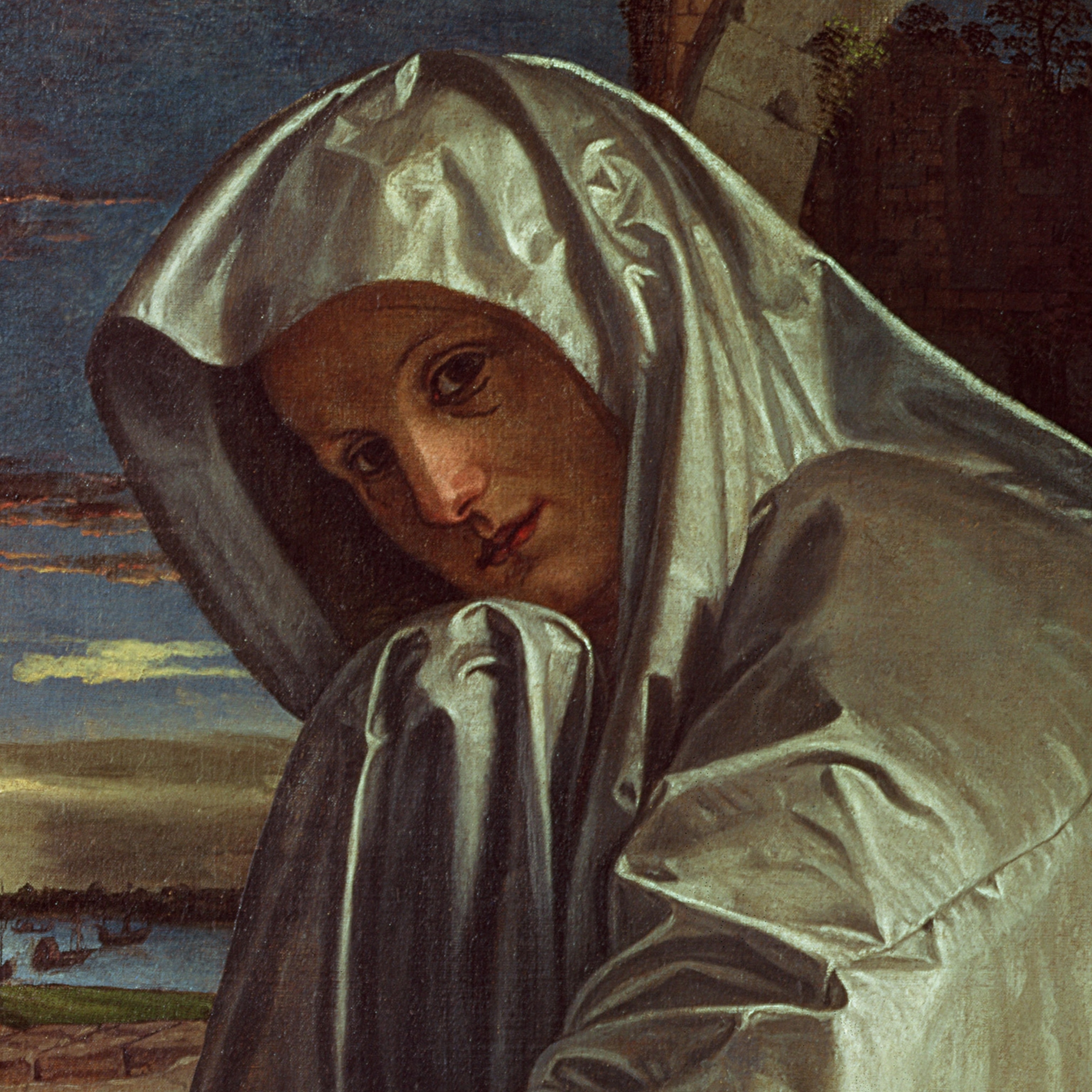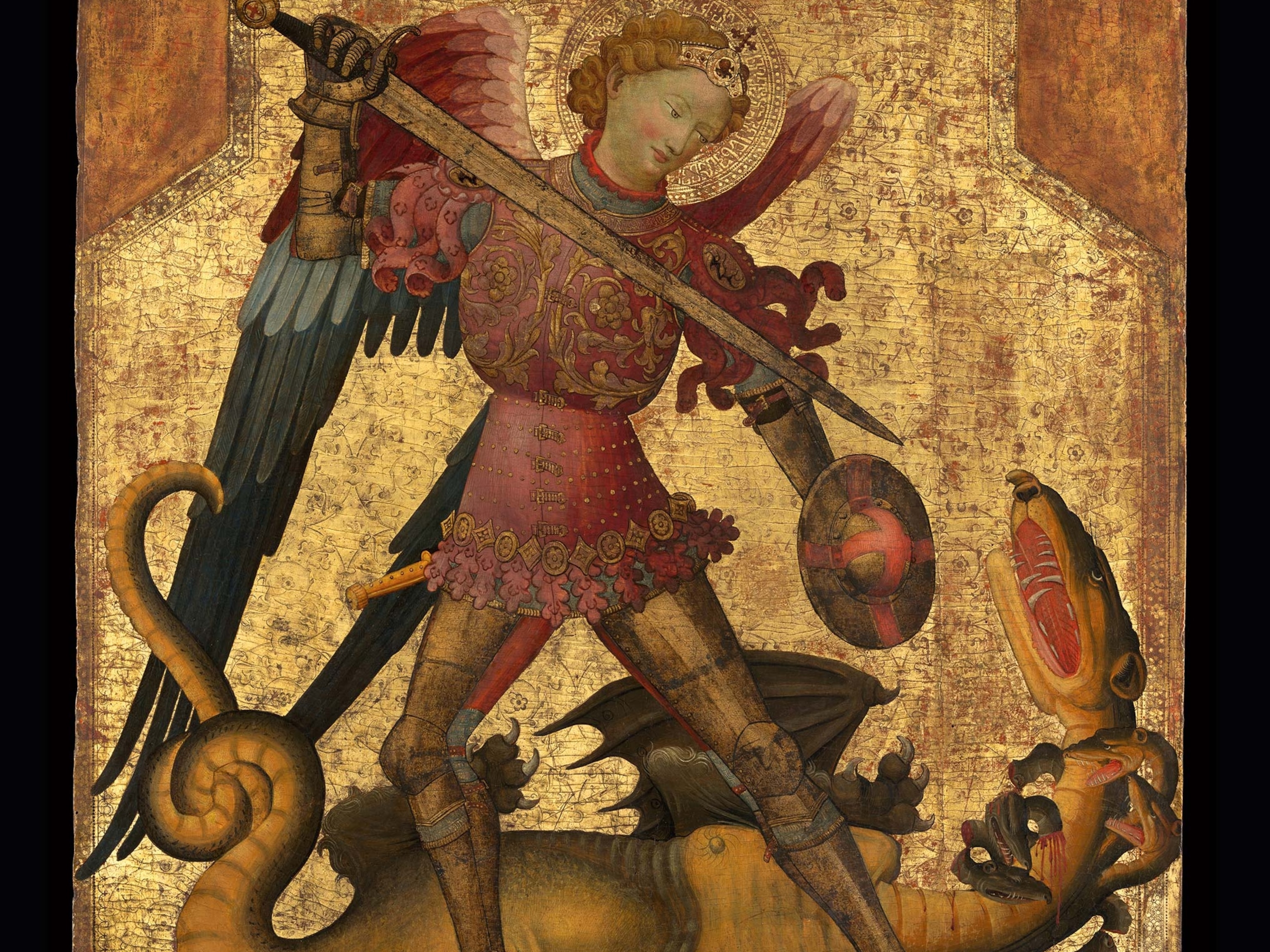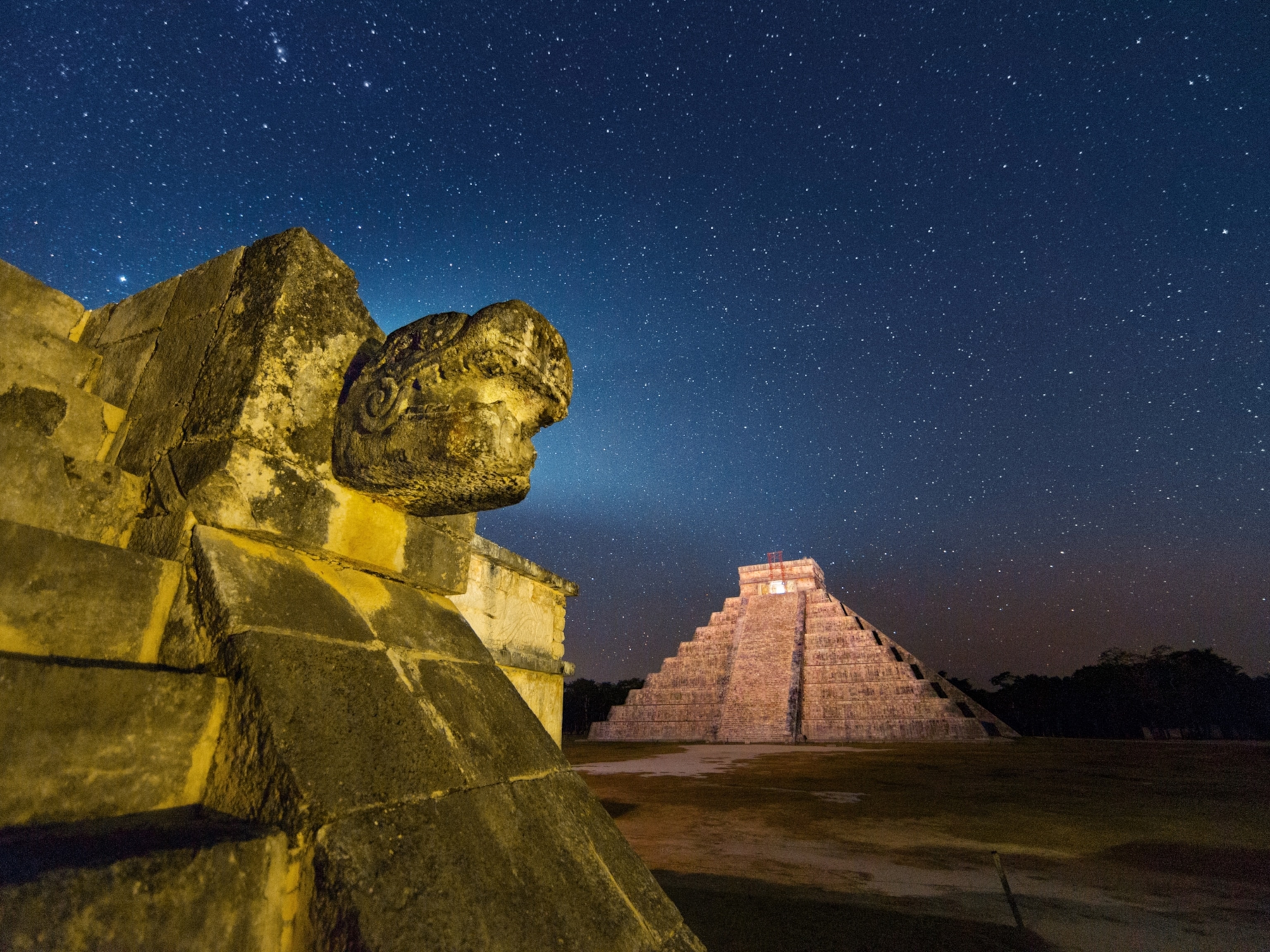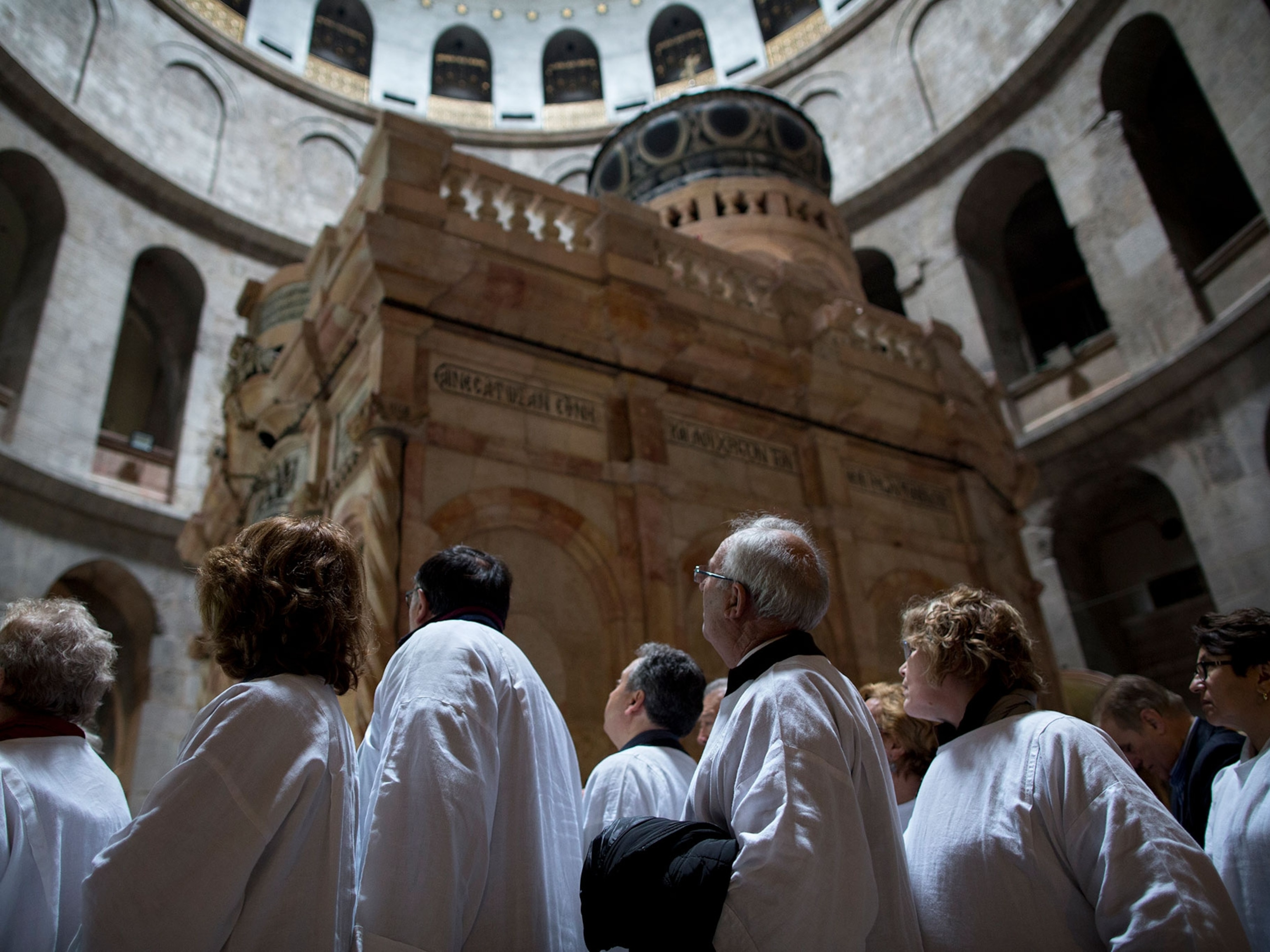The origins of this naked chalk drawing in England are still a mystery
Romans, Vikings, or civil war? The history of the Cerne Giant has been debated for centuries.
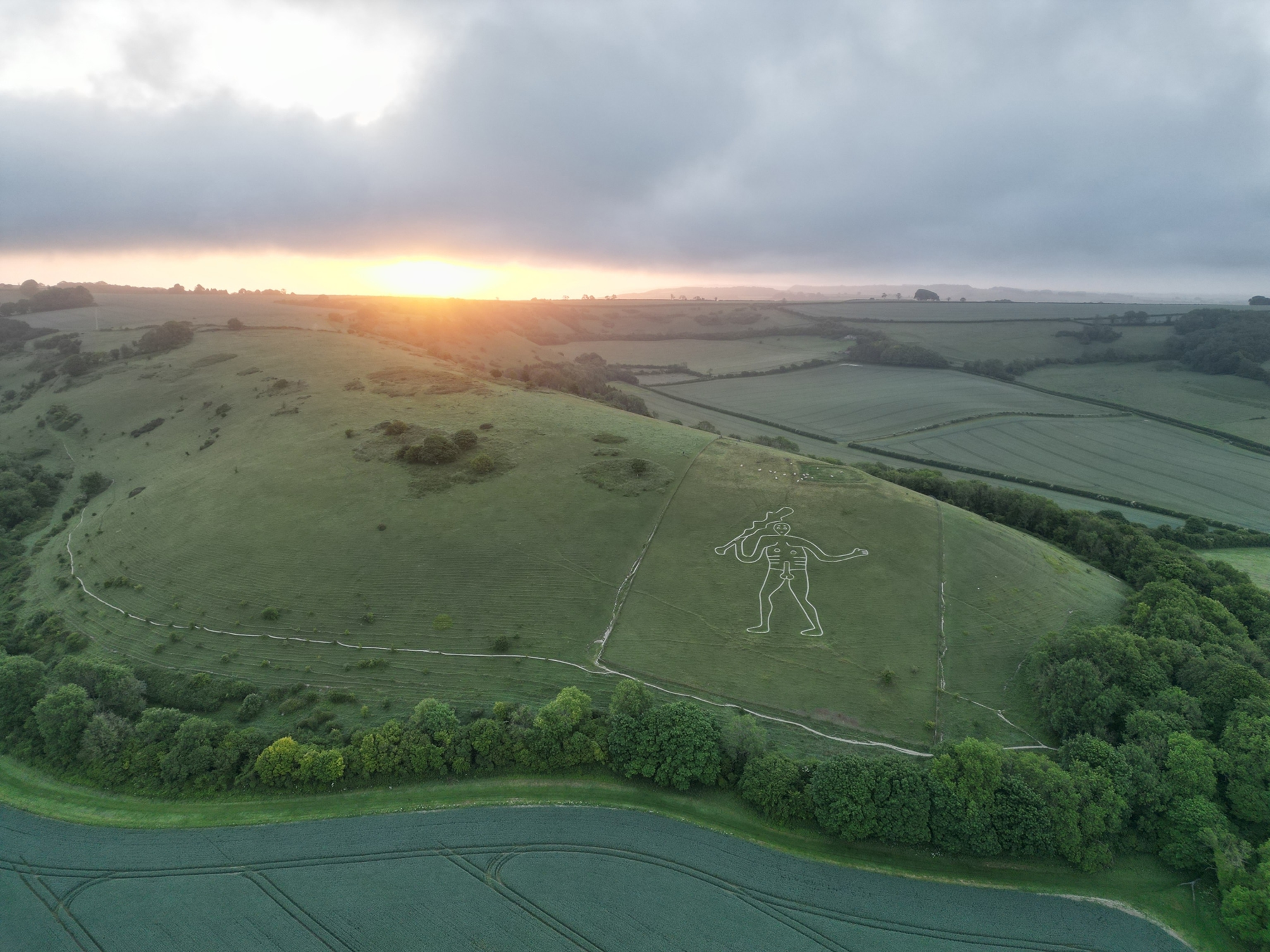
For hundreds of years—no-one is sure how long—the enormous depiction of a naked man has dominated a steep hillside in the rural Cerne Valley in south-west England. The 180-foot-high figure was created by removing turf to expose the white chalk beneath.
One of the figure's arms is outstretched, while the other brandishes a club; it’s most famous feature, however, is the unmistakable erect penis, 36 feet in length, which has led to the figure being called “The Rude Man of Cerne.”
The “Cerne Giant”(as it’s more politely known) has long baffled those who sought to explain it, but recent research has revealed more about its creation and significance—with a history that ranges from the Romans and Vikings to the English Civil War.
Pagan gods and political satire
Many huge chalk “drawings” are found throughout the English landscape, especially in the south. Some were cut in the last few hundred years as symbols for towns or regiments, but a few are prehistoric, including the Uffington White Horse, which is more than 3,000 years old.
The Cerne Giant, however, is the most perplexing of these chalk figures. Some have said the giant was an ancient depiction of a pagan god, while others believed it was a piece of political satire from the 17th century. More recent research has now combined archaeological and cultural evidence to suggest the Cerne Giant was carved into a hillside more than a than a thousand years ago to mark the place where local Saxons mustered arms to defend their farms and homes against invading Vikings. The new research also proposes that the Cerne Giant originally portrayed Hercules, the Greco-Roman demigod, who was a prominent hero in early medieval England.
“We're making a case that [the Cerne Giant] could well have been carved as a very striking and prominent marker in the landscape for local armies to muster,” says medieval historian Thomas Morcom, now of Norway’s University of Oslo and formerly a doctoral student at the University of Oxford.
Dating the giant
Morcom is a co-author, with University of Oxford medieval historian Helen Gittos, of a study published in March 2024 in the journal Speculum.
Their study builds on archaeological research carried out a few years ago by the National Trust, a charity funded in part by the British government. That research used optically stimulated luminescence (OSL) studies of the sediments around the Cerne Giant to determine that it was first cut into the earth in the 9th or 10th centuries A.D.—more than a century before the Norman Conquest of England in 1066.
The finding was a surprise to National Trust archaeologist Martin Papworth, who led the excavations. He’d expected the giant to date from the 1600s, perhaps in the 1640s during England’s Civil War; one theory is that the naked figure was an obscene lampoon of the parliamentary leader Oliver Cromwell.
Papworth broadly agrees with the interpretation put forward by Morcom and Gittos, although he thinks the Cerne Giant may have marked a place of early Christian pilgrimage, rather than a mustering place for armies.
Medieval origins
Gittos notes the giant would have been visible in many parts of the West Saxon region when it was built; and that other features of the surrounding landscape—including a “blowing stone” (or “bellingstone”) with a hole for sounding a note, like a bugle—suggest it may have marked a mustering place.
The depiction of Hercules, too, would fit such a purpose: The combative hero was well known in post-Roman Europe and celebrated among the early medieval English, Morcom says; many late Roman depictions of Hercules portrayed him as naked and brandishing a club.
But the story of the Cerne Giant doesn’t end with its creation. Instead, Morcom and Gittos also suggest that the enormous figure was repurposed in later centuries to portray the early English saint and hermit Eodwald.
The researchers argue that it was in this guise, with the giant’s club now representing a flowering staff and his phallus representing his nakedness, that the figure was used to cement a claim on the land by a nearby abbey of Benedictine monks.
Gittos says forthcoming research will test that theory. “I’ve come to realize that the giant is just one part of a much bigger monument,” she says. “It’s just the thing that is the most visible… but actually it is part of a much bigger constellation of things.”
A mysterious figure
While the latest research is based on hard science, it isn’t absolutely conclusive; and different theories remain about the origins of the Cerne Giant.
An 18th century antiquarian suggested the giant represented a pagan god named Helith; but Morcom and Gittos think this name was merely a misreading of an earlier references in Latin.
Archaeologist Mark Allen, who carried out the geophysical work for the National Trust research, thinks the figure originally portrayed Saint Eodwald, and that it was only later interpreted as Hercules. The giant’s phallus may not seem very saintly today, but that attitude is an anachronism from the Victorian era, Allen says, and would have been far less offensive in medieval times.
Still another theory is favored by Jonathan Still, the vicar of the nearby village of Cerne Abbas, which is only a few hundred feet south of the giant’s hillside. He thinks the earliest versions of the Cerne Giant were older than the new studies suggest, and that the figure may have been a tribal emblem of the Durotriges, an Iron Age tribe of Britons who lived in the area in the first millennium B.C.
“I think he’d have been the emblem of the tribe,” Still says, noting that the Uffington White Horse is also thought to have been the emblem of the Iron Age tribe that built it. “He’s right in the center of their territory, and I think they would have gathered there for ceremonial purposes—[perhaps] to get a new wife for your son, or husband for your daughter.”
